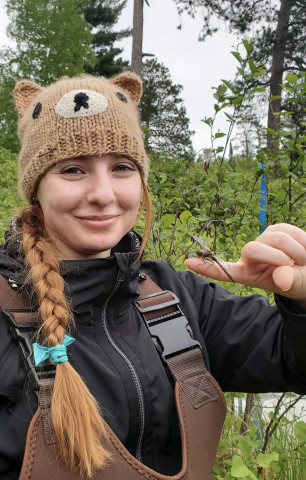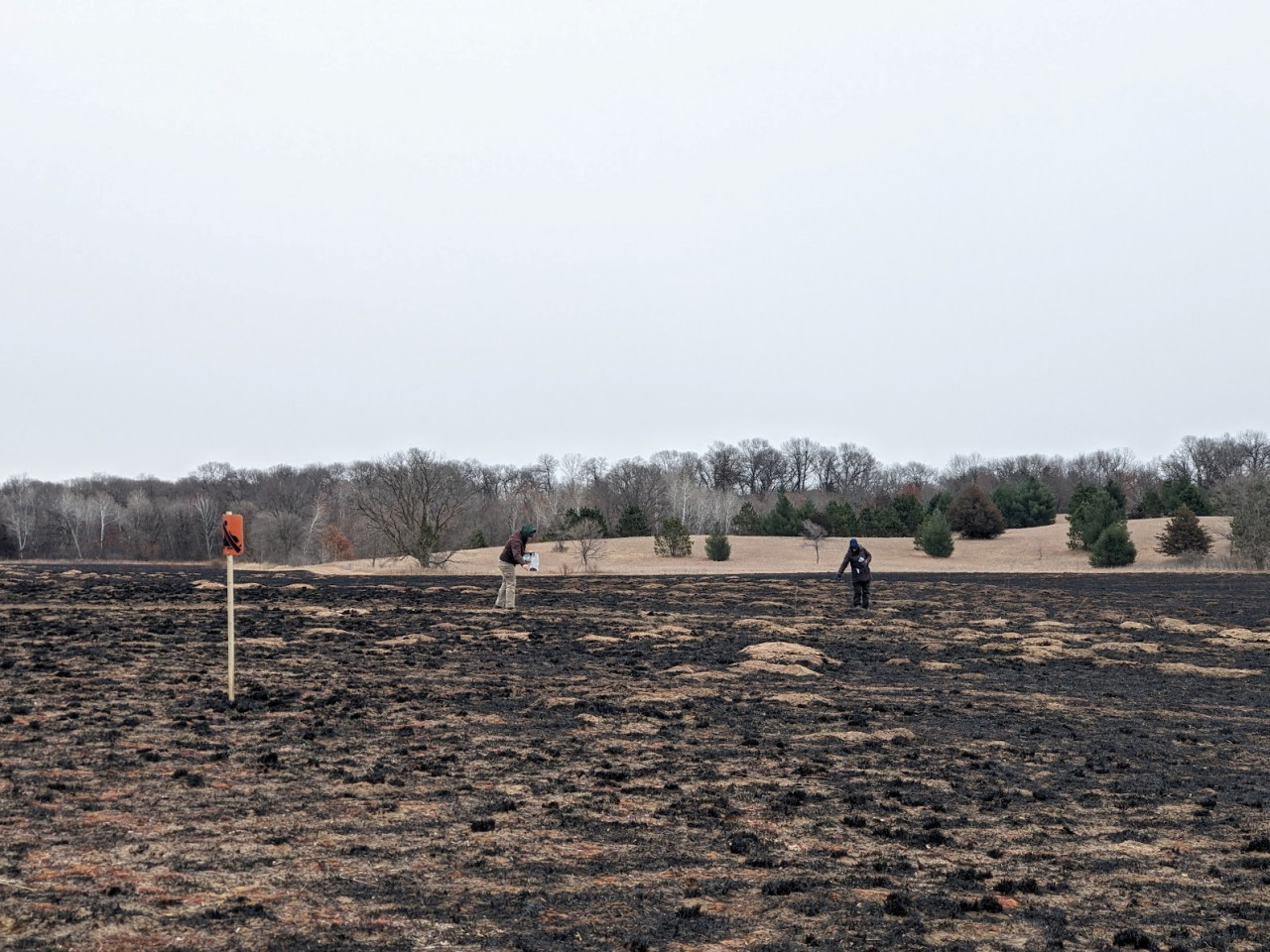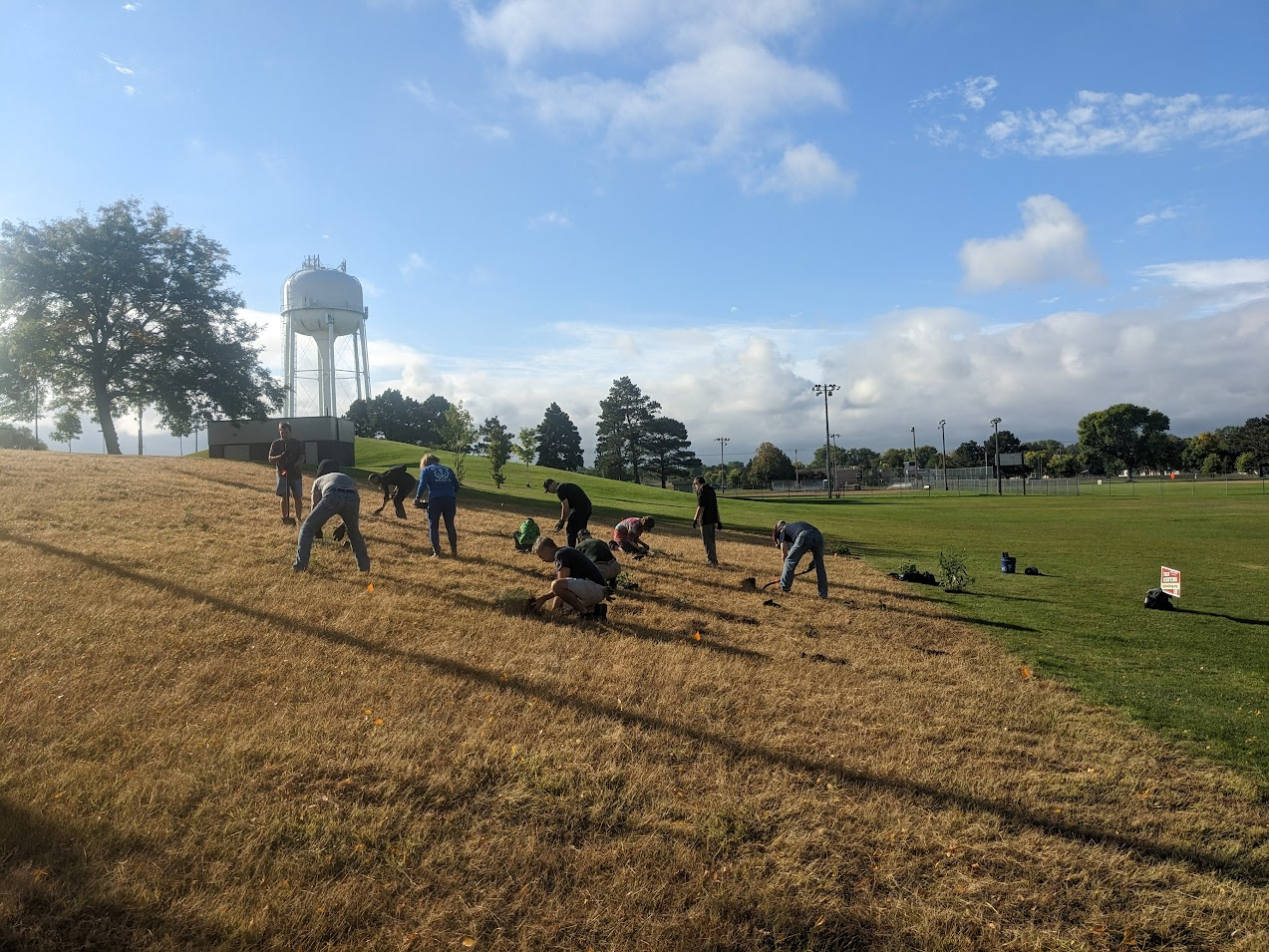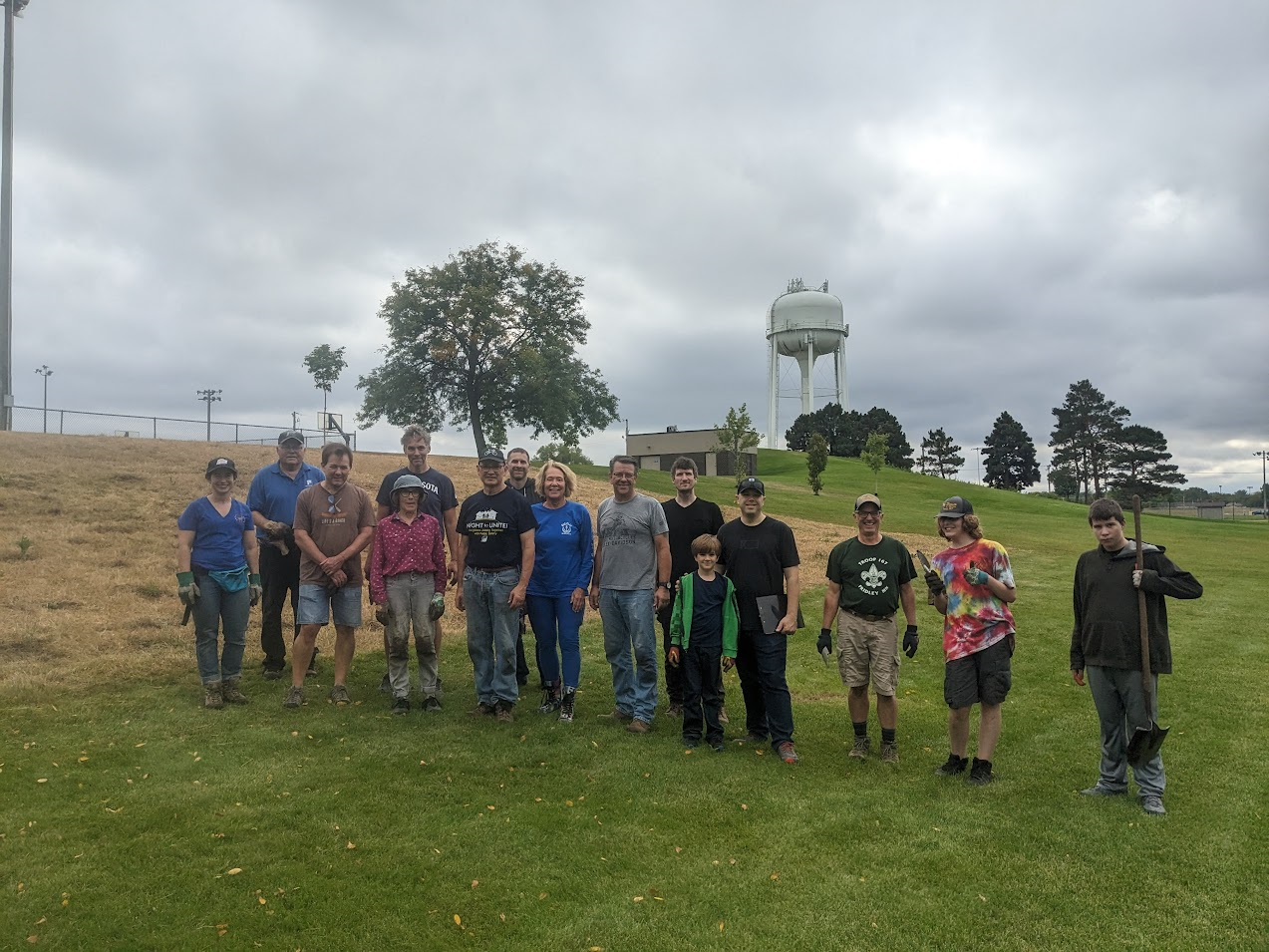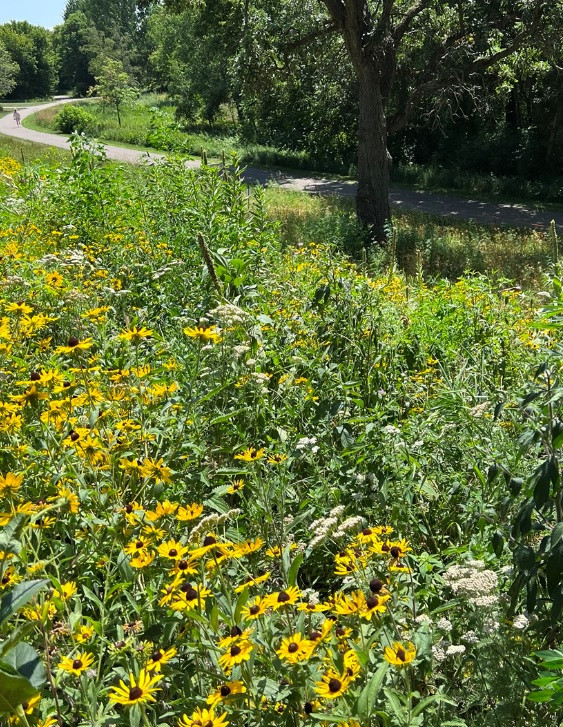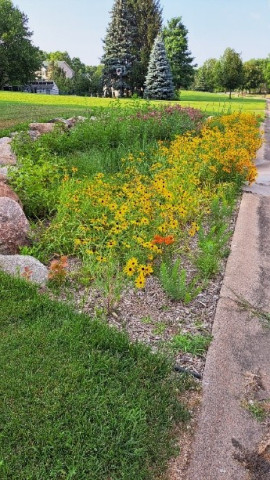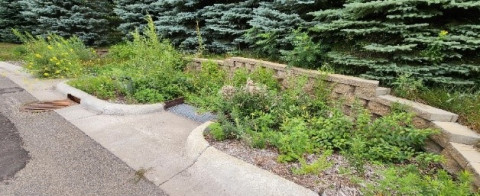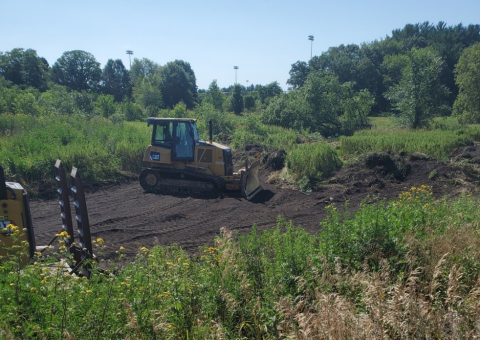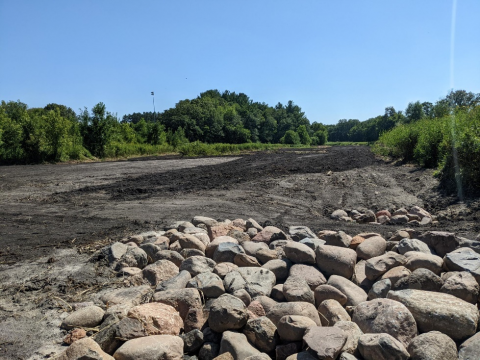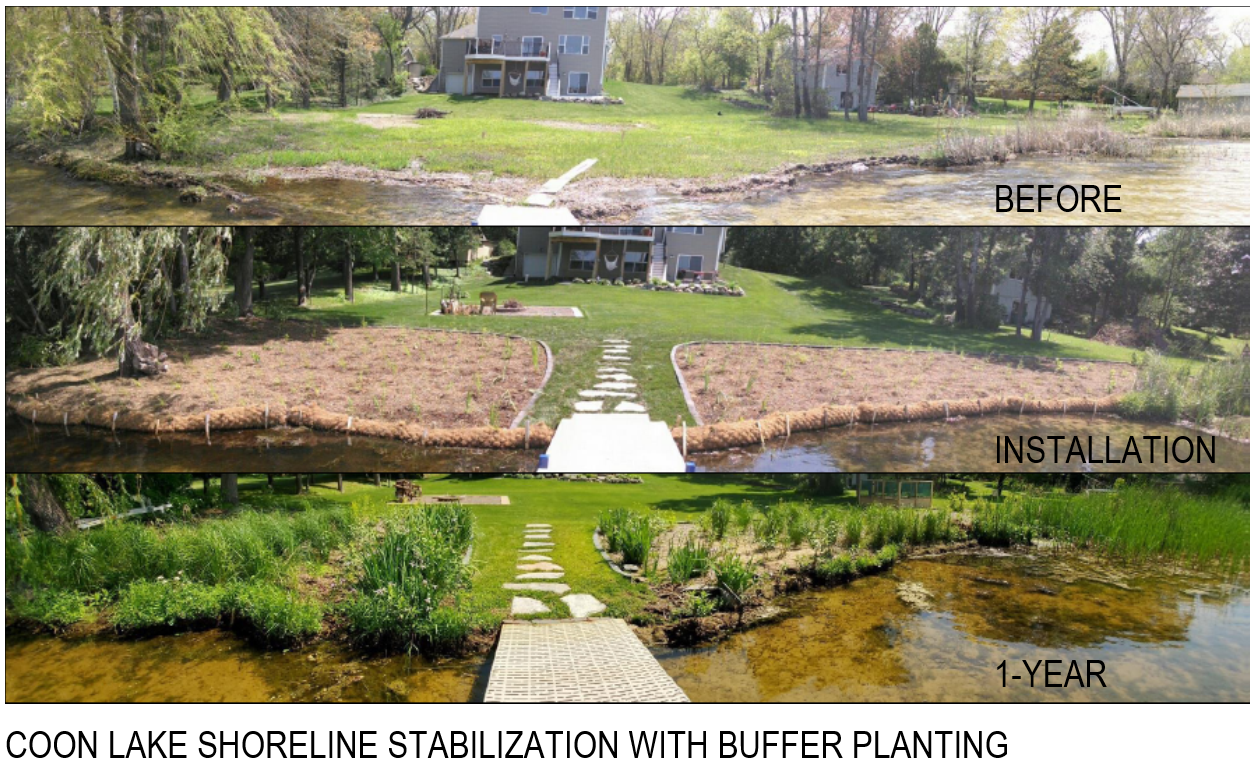Balin (Bayl'n) Magee accepted a position as a Restoration Technician. Balin has a B.S. in Forest Management and a B.A. in Spanish. He is a certified arborist and has received training in firefighting, chainsaw operation, and pesticide application. Balin is adept at plant identification at all stages of development, from seed to senescence. Balin started down the forestry track but got the restoration bug along the way and has pivoted in recent years. Reach out to Balin at
Jordi Johnson joins ACD as a Restoration Technician. Jordi holds a B.S. in Biology with a minor in Environmental Studies. She joins the team with extensive experience on burn crews, leading Conservation Corps MN crews, invasive species treatment, plant and insect surveys, woodland plant identification, chainsaw use, and herbicide application. Reach out to Jordi at
ACD was recently awarded National Fish and Wildlife Foundation Monarch Butterfly and Pollinators Conservation Funds to increase habitat for the monarch butterfly and other pollinators. ACD is collaborating with Sherburne County Parks and Great River Greening to restore and enhance habitat and create pollinator corridors within the Anoka Sand Plain region. This funding will help support and expand state programs such as the Anoka Sand Plain Partnership and the BWSR Habitat Enhancement Landscape Program.
Sherburne County Parks will coordinate restoration and enhancement activities at Bdé Heḣáka, Omashkooz Zaaga'igaans Regional Park, a new park in coordination with Tribal Historic Preservation Officers from the Upper and Lower Sioux Community and Mille Lacs Band of Ojibwe to restore land through traditional cultural methods. Great River Greening will coordinate projects to enhance large habitat corridors in Sterns, Sherburne, Chisago, Wright, Anoka, Benton and Morrison counties. ACD will coordinate projects within Anoka County.
Unused lots, agriculture fields that are out of production and turf will be restored to create new habitat by planting native milkweed and wildflowers. Degraded lands that have little to no milkweed and forbs will be enhanced by controlling invasive species and conducting prescribed burns. ACD will be hosting events to plant, collect seed, and participate in a national Integrated Monarch Monitoring Program. Details on volunteer opportunities are coming soon! For more information contact Carrie Taylor, Restoration Ecologist, at
ACD strives to build resilient pollinator corridors throughout Anoka County. This goal is accomplished by protecting and enhancing existing habitat and creating new habitat. ACD is fortunate to have local partners who also share this vision and are helping identify unused turf areas that can be converted to native plantings. ACD is currently working with the Cities of Fridley and Blaine to convert turf into prairie plantings in public green spaces. Half an acre of turf is being converted in Fridley's Commons Park and 0.3 acres of turf to prairie at Blaine's Laddie Lake Park. Staff from both cities prepared the sites and mowed the sites to prevent weeds from seeding. ACD staff seeded the sites in the spring. Members of the Cities and multiple volunteer groups planted native grasses and wildflowers to add to the seed mix.
These projects are funded by BWSR's Habitat Enhancement Landscape Pilot (HELP) grant. Other ACD HELP turf to pollinator projects are at Coon Lake County Park, Bunker Hills Regional Park and Ramsey River's Bend Park. The BWSR HELP grant also provides funds to enhance native prairies at the Cedar Creek Conservation Area, Bunker Hills Regional Park, Rum River Central Regional Park, Rice Creek Chain of Lakes Park Reserve and Mississippi West Regional Park.
One way to help these projects is to donate your native prairie seeds, including milkweed seed. See ACD's previous post about milkweed seed collection. Watch this short video to see butterfly milkweed seed cleaning.
For more information contact Carrie Taylor, Restoration Ecologist, at
Knotweed is a species of increasing concern with several new populations across Anoka County. Knotweeds are herbaceous shrubs characterized by a sturdy, bamboo-like stalk which can grow to over 10 feet in a single season. They grow aggressively, especially along riparian areas where they outcompete native vegetation and create bare ground which enhances erosion damage. Knotweed can also grow through sidewalks and concrete foundations, damaging infrastructure.
There are three species of knotweed in MN: Giant, Japanese, and Bohemian which is a hybrid of the first two. All three Knotweed species are on the state noxious weed list as Prohibited Control species. Efforts must be made to stop their spread and propagation. Late August into September is the easiest time to spot Knotweed infestations due to their showy white flowers. You can help keep this species under control by entering sightings into EDDMaps or reporting them to ACD staff.
See links for Giant, Japanese, and Bohemian knotweed ID and knotweed management guidance from the MDA.
For more information contact Logan Olson, Restoration Technician, at
From Landowner, City of Andover:
Thanks for the encouragement, it's been quite the journey. So many more pollinators, less wasp problems around our house, and more butterflies! Even though there are lots of weed problems (buckthorn), crown vetch, and garlic mustard. And this is with one year of site prep! Crazy stuff… it is very encouraging to see how creation relies on each part of each other and the interaction between plants, animals, bees, etc. is fascinating to watch!
There were no current cost share funds available but ACD has been providing technical assistance to many landowners who are interested in starting prairies. Throughout Anoka County there is a lot of interest in prairie restoration.
For more information contact Carrie Taylor, Restoration Ecologist, Carrie.Taylor
Native wildflowers, grasses, sedges, and shrubs provide numerous benefits to wildlife habitat, soil health, and water quality. They are also generally more resilient to fluctuations in temperature, precipitation, and foraging by wildlife than non-native species. However, native plantings can still be impacted by disturbances such as weather or the growth of invasive and weedy species. For these reasons and especially if a specific landscaped look is desired, maintenance is still required to help native plantings thrive and look their best.
Plants are most susceptible to die-off within the first 3-5 years of being planted. During this initial period, it is essential to frequently weed, water, and re-plant in areas where losses occur. Once established, native vegetation requires less maintenance but should still be regularly inspected for weeds and pruned or thinned as needed to ensure there is adequate sunlight available for all species. Large-scale restorations such as the conversion of former agricultural fields to prairie may require regular management through prescribed burns, grazing, or mowing to mimic cycles of natural disturbance and new growth.
The most common barriers to achieving success in establishing native plants is failing to water and remove weeds. These two actions make a big difference in the appearance and function of native landscaping features, as shown in these two photos – one of which is regularly weeded and watered (above left) and the other which has received less maintenance (above right).
You can take several steps to make native landscape maintenance easier. First, make sure the species you plant are well-suited to the soil and sunlight conditions on your property. Plant into erosion control fabric or mulch to help reduce weed growth. Learn to identify the native species you choose and plant them in clusters to make it easier to spot weeds that pop up. Water native plantings, especially during times of drought. Weekly maintenance, especially during the critical establishment period, strongly increases the likelihood of success and prevents these tasks from becoming overwhelming. If weeds have taken over or you've noticed die-off in your native landscapes, it isn't too late! Use the following resources to help guide your native landscape rehabilitation endeavors.
- Common weed ID – quick guide
- Invasive plants and suggested replacements
- Comprehensive information: native plants for sustainable landscapes
Rivers are essential resources and provide an immeasurable list of services that are critical for many ways of life throughout the world. Minnesota is home to many important river systems, such as the Mississippi River, that provide services which help sustain life and provide resources to help human economies thrive.
Minnesota's rivers endured decades of intensive impacts as the state industrialized, commonly used as a dumping grounds for untreated waste and modified extensively to make navigation easier. Our treatment of rivers has improved significantly in the years since, but human activity continues to impact them today. River systems are extremely complex in nature and many of the negative impacts caused by human activity go unrecognized or are misunderstood. Fortunately, there are many ways we can minimize our impacts and help restore our rivers to good health.
The Anoka Conservation District has proudly released a new animated video to help understand how rivers function and the role humans play in keeping them healthy. "Our River Connection" video brings you on a journey through a breadth of river topics, such as river formation, natural river behavior, current and historical human impacts, and actions we can take to protect them today. This video is suitable for a wide range of audiences, with narrative and visuals that are approachable and easy to digest. When you're done watching the video, you can take the companion quiz or explore the links in the video description to learn more.
ACD Contact: Breanna Keith,
Anoka Conservation District, the U.S. Fish & Wildlife Service, The Nature Conservancy, and the City of Andover are working together to restore natural hydrology and establish native vegetation at Pine Hills North Park in Andover.
A private ditch was plugged and weeds in the basin were scraped and used to fill in the ditch, preventing drainage of water and recreating the conditions of a wetland. The scraped area will be seeded with a mesic prairie seed mix in the fall.
Anoka Conservation District has been working with the City of Anoka and Mississippi Park Connection to create a more resilient landscape at Kings Island. Efforts have begun to remove invasive buckthorn from the island to allow space and light for native plant regeneration. Invasive emerald ash borer (EAB) infestations that kill ash trees have been detected throughout the Metro region and near Kings Island. Approximately 50% of Kings Island canopy is ash (green, black or white ash) so a loss of ash would have a great impact on the habitat on Kings Island. Surveys have and will continue to be conducted to monitor for the presence of EAB. To prepare for the loss of ash trees and create a more resilient landscape at Kings Island, a diversity of tree and shrubs were planted by volunteers. Species planted include Nannyberry (Viburnum lentago), Red-oiser Dogwood (Cornus sericea), Swamp white oak (Quercus bicolor), Butternut (Juglans cinerea), Cottonwood (Populus deltoids), Hackberry (Celtis occidentalis), Highbush Cranberry (Viburnum trilobum), and Sycamore (Platanus occidentalis) a tree with a more southern range. More efforts are needed to control buckthorn and create diversity for a more resilient landscape at Kings Island.
Anoka Conservation District staff provided a 90-minute virtual tour focused on lake management and shoreline stewardship for the Metropolitan Area Conservation Districts summer meeting. Attendees included supervisors and staff from the 11-county metro area.
Typically, a bus tour is coordinated in order to highlight completed projects throughout the selected county. COVID-19 of course prevented this approach, but rather than cancel the tour, ACD facilitated a virtual tour. The novel approach was very well received by the approximately 30 attendees.
Topics included understanding your lake, assessing the health of lakes, recruiting and being a lake steward, and highlights of lake stewardship projects. Staff presentations used animations, pictures, and videos to demonstrate the complexity of managing different types of lakes and working with landowners to manage shorelines.
For more information about technical and financial resources available for lakeshore restoration projects, click here: https://www.anokaswcd.org/lakeshore-restoration.html/

